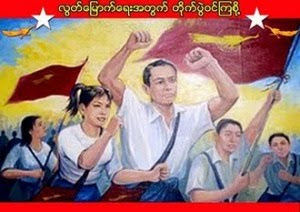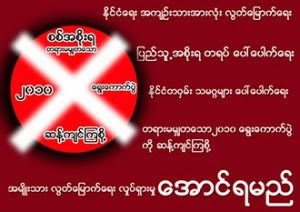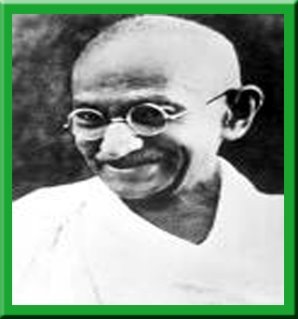“Last year I was in Rwanda, where western governments failed to name genocide for what it was. After Rwanda, the international community once again declared "Never again", but in Burma it is never again, all over again.”
(Lord Alton, House of Lords, parliament debate on 28th November 2005)
Genocide is the world most horrible human rights problem. It killed millions of people during the past decades, especially 1.5 million Armenians, 3 million Ukrainians, 6 million Jews, 250,000 Gypsies, 6 million Slavs, 25 million Russians, 25 million Chinese, 1 million Ibos, 1.5 million Bengalis, 200,000 Guatemalans, 1.7 million Cambodians, 500,000 Indonesians, 200,000 East Timorese, 250,000 Burundians, 500,000 Ugandans, 2 million Sudanese, 800,000 Rwandans, 2 million North Koreans, 10,000 Kosovars. Most of the cases were committed by the government. When those in power are wrong, it has become a threat to its own people.
The origin of the concept called ‘Genocide’ is the 1944 work by Raphael Lemkin on Axis Rule in Occupied Europe:
“[ ] This new word….is made from the ancient Greek word genos (race, tribe) and the Latin cide (killing)……aiming at the destruction of essential foundations of the life of national groups, with the aim of annihilating the groups themselves [ ]" (Lemkin, 1944:79)
According to the Convention on the Prevention and Punishment of the Crime of Genocide adopted by Resolution 260 III A of the UN Assembly on 9th December 1948, Genocide can be defined as
“[ ] any of the following acts committed with intent to destroy, in whole or in part, a national, ethnical, racial or religious group, as such:
(a) Killing members of the group;(b) Causing serious bodily or mental harm to members of the group;(c) Deliberately inflicting on the group conditions of life calculated to bring about its physical destruction in whole or in part;(d) Imposing measures intended to prevent births within the group;(e) Forcibly transferring children of the group to another group” (Article II)
The Convention also categorized the punishable acts as
· Genocide;
· Conspiracy to commit genocide;
· Direct and public incitement to commit genocide;
· Attempt to commit genocide;
· Complicity in genocide. (Article III)
As Genocide was mostly committed by the rulers, the Convention clearly identified the enforcement in Article IV as “Persons committing genocide or any of the other acts enumerated in article III shall be punished, whether they are constitutionally responsible rulers, public officials or private individuals”. In fact, Genocide affects not only the victims of the national groups but also the international community in a contemporary world.
As Pellet argued,
“[ ] Genocide threatens the international society as a whole, the very basis of the Still fragile international community” (Pellet, 1999:427)
In the case of Burma, although it ratified the Convention in 1956, the current military regime has adopted Genocide as a terror against the ethnic national groups of Karen, Karenni and Shan people, etc. and the evidences were well-documented in the resources of
Rogers, Benedict (2004) “ A Land Without Evil: Stopping the Genocide of Burma’s Karen People”;
Horton, Guy (2005) “ Dying Alive: A legal Assessment of the Human Rights Violations in Burma”;
Rummel, R. (2001) “Saving Lives, Enriching Life” Pg.18-22; and so on.
As the ‘Genocide Acts” of Burmese military regime were obvious, Baroness Cox, Chief Executive of Humanitarian Aids Relief Thrust (HART) and a deputy speaker of the British House of Lords, who has visited the regions of Karenni, Shan and Karen people many times, called on the international community to investigate claims of genocide and crimes against humanity.
In his work of “A Desperate situation: Genocide in Burma”, Browning also mentioned that the torching of villages, destruction of food stores and crops, theft of livestock and property, extra-judicial killings and rape were every day occurrences affecting hundreds of thousands of innocent civilians. (Browning, 2002)
Moreover, Guy Horton's claimed for the usage of the concept 'genocide' in relation to Burma rests on the 1948 Genocide Convention, ratified by Burma in 1956 as
“According to the convention, the genocide is described as 'deliberately inflicting on the group conditions of life calculated to bring about its physical destruction in whole or in part'. There are over a million people internally displaced in Burma and more than 2,500 villages in eastern Burma have been destroyed since 1996”
(Horton, 2005)
Furthermore, according to the Muslim aid report of “Rohingya faces genocide in Burma”, it was mentioned as
“Extermination and genocide increased, and within nearly 4 decades about half (1.5 million) of total Rohingya population had been forced to flee their homeland and those remaining in the country are counting their days in utter misery, fear and frustration”
(Muslim Aid, Al-Jamiat Journal, 2002)
In conclusion, I would like to appeal the international community not to ignore the “Genocide practices” committed by the Military Regime in Burma and take actions against the international criminals in accordance with the international law.
Khin Ma Ma Myo (19/03/2006)
.............................................................................
References
Browning, C. (2002) “A Desperate situation: Genocide in Burma”, Australia Karen Youth Project, Vol. 1, Issue 2, September 2005
Muslim Aid (2002) “Rohingya faces genocide in Burma”, Al-Jamiat Journal, July 2002
Convention on the Prevention and Punishment of the Crime of Genocide www.un.org
Horton, Guy (2005) “Dying Alive: A legal Assessment of the Human Rights Violations in Burma”, The Netherlands
Lemkin (1944) “Axis Rule in Occupied Europe”, pg.79
Lord Alton, Parliament debate documentation, 28 November 2005
Pellet, ‘Can a State commit a Crime?’ European Journal of International Law, 10 (2), www.ejil.org/journal/vol10/No2/index.html
Rummel, R.(2001) “Saving Lives, Enriching Life”, online version
Rummel, R. (1994) “Death by Government”, Transaction Publishers, New Bruns Wick, N.t.s


































